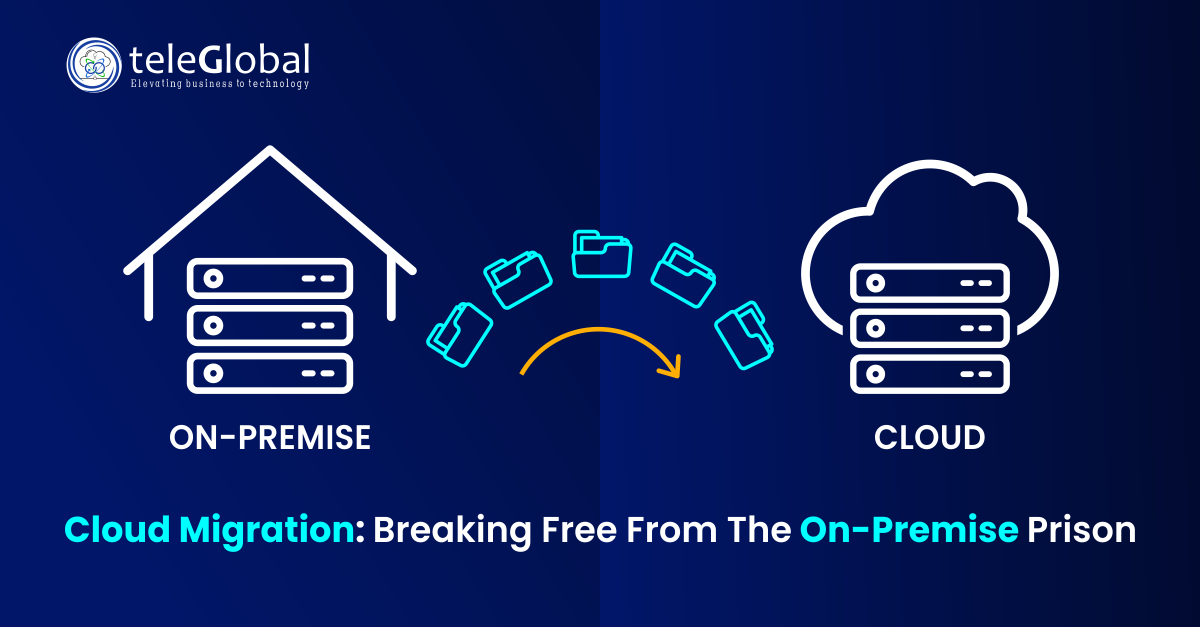
| Author: Kamlesh Kumar | Published: 08-Jan-2024 |
Across industries, many organisations still rely on ageing on-premise servers that struggle to keep pace with the volume, speed, and security demands of today’s business environment. The impact is felt in slower system performance, rising operational costs, and missed opportunities for innovation. To address these constraints, an increasing number of businesses are turning to cloud migration as a planned and carefully executed step toward greater flexibility, stronger security, and a more scalable future.
Your business data grows rapidly, every customer interaction, automated report, or machine reading adds to the pile. Storing this data locally is one challenge, but storing it securely and efficiently is another.
On site servers fill quickly and upgrading them can be costly and time consuming. Recovering after a major outage may take hours or even days. Add to that the costs of licenses, maintenance, energy, and cooling, and the on premise model becomes a heavy anchor.
Cloud data storage replaces rigid infrastructure with flexible capacity that can expand or contract instantly. No more waiting for new hardware to be delivered and configured.
Secure cloud solutions bring built in encryption, controlled access, and automatic backups. Security updates happen in real time, without draining your IT resources.
Businesses that move to the cloud often see disaster recovery times cut by more than half. Data can be restored in hours rather than days, reducing downtime costs and protecting customer trust.
The adoption curve continues to rise. A growing majority of enterprises already operate part of their workloads in the cloud, and that number is increasing as companies modernise infrastructure and processes.
From a financial standpoint, cloud platforms remove the need to purchase excess hardware “just in case” and prevent resources from sitting idle. Many businesses report measurable cost savings alongside greater control and predictability in technology budgets after making the transition.
Holding on to fully on premise infrastructure is like owning a warehouse full of shelves you might never fill, while paying for their upkeep every month. The cloud offers a way out.
Every month on premise systems continue running, you face higher maintenance costs and risk missing opportunities. Cloud migration is not just a cost saving exercise — it enables faster innovation, remote work readiness, and better resilience.
Cloud migration is not simply a technical change, it is a shift in business capability. It removes the physical limits of infrastructure, strengthens resilience, and gives your teams the ability to adapt and grow quickly.
At Teleglobal we help businesses design and execute migrations that align with their goals. Whether you need secure cloud data storage, AWS Server Migration Service, or custom cloud backup solutions for small business, we deliver a smooth, cost effective transition built for long term success.
Cloud migration is the process of transferring data, applications, and services to a cloud platform. It removes the cost and constraints of maintaining physical servers while providing better scalability and reliability.
It offers instant scalability, built in redundancy, and modern security measures without large upfront investments.
Cloud platforms provide continuous monitoring, advanced encryption, and immediate security updates that often surpass in house capabilities.
Many businesses experience reduced infrastructure expenses, predictable monthly costs, and lower disaster recovery expenses.
They allow quick recovery after disruptions, store data securely off site, and scale effortlessly as the business grows.
 close
close

Hi there! At TeleGlobal, we turn your cloud vision into AI-accelerated reality. What challenge can we help you solve?
Powered by ![]() teleBot
teleBot